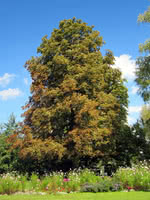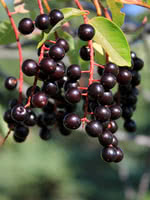Mon-Fri 9am - 5pm Mountain time
Horse Chestnut vs Western Chokecherry
Aesculus hippocastanum
Prunus virginiana var. demissa
ONLY AVAILABLE BY CONTRACT GROW
SOLD OUT
Horse Chestnut is a medium sized deciduous tree that is native to Greece but has been grown in North America for hundreds of years. It produces large nuts.
A top CO2 absorbing species. Experts think this tree may help climate change more than others.
Western Chokecherry is a shrub or small tree commonly used for farmstead and field windbreaks.
It produces white flowers in the spring and edible dark purple fruit that matures between September and October. Its cherries are great for making for making jams, jellies or wine, but are not very palatable for raw eating.

